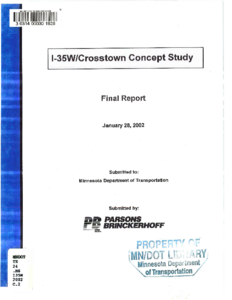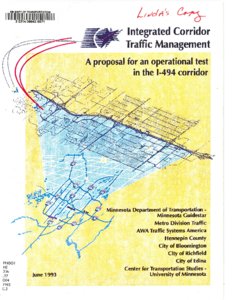Operational test of integrated corridor traffic management (ICTM) in the I-494 corridor : 34th Avenue South to East Bush Lake Road, cities of Bloomington, Richfield and Edina
Date Created
1993-06
Description
TH 610/TH 252 Draft Environmental Impact Statement
Date Created
1981-04
Description










